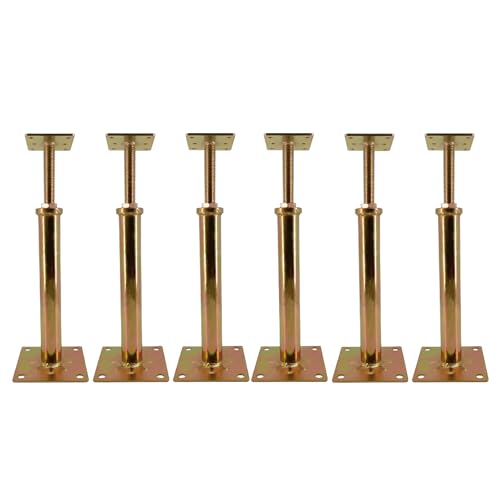
Why Replace Your Toyota Camry Timing Belt?

You need to replace your Toyota Camry’s timing belt to keep the engine’s crankshaft and camshaft perfectly synchronized, ensuring smooth valve operation and ideal performance.
Over time, the belt wears down, risking catastrophic engine damage if it snaps, causing pistons and valves to collide. Ignoring replacement can lead to costly repairs and performance issues like misfires.
Timing belts typically require replacement every 60,000 to 90,000 miles depending on your model year.
Discover how to spot warning signs and plan maintenance effectively.
 What Are the Top Shops for Timing Belt Replacement?
What Are the Top Shops for Timing Belt Replacement?Table
Main Points
- The timing belt synchronizes engine components for optimal performance and prevents engine misfires or inefficiency.
- Replacing the timing belt at recommended intervals prevents catastrophic engine damage from belt failure.
- Delaying replacement risks the belt snapping, causing pistons to collide with valves and leading to costly repairs.
- Signs like unusual engine noises, misfires, or visible belt damage indicate urgent need for replacement.
- Professional replacement ensures correct timing, uses OEM parts, and avoids extensive engine disassembly complications.
The Role of the Timing Belt in Your Toyota Camry
The timing belt in your Toyota Camry plays a critical role by synchronizing the crankshaft and camshaft rotations, ensuring the engine’s valves open and close precisely during the combustion cycle. This precise timing is essential for maximum engine performance and efficiency. When the timing belt needs attention or fails, you risk performance issues such as engine misfires and, worse, catastrophic engine damage. If the timing belt breaks, the engine’s internal components can collide, causing severe failure. To avoid this, it’s crucial to replace your timing belt according to your Toyota’s maintenance schedule. Regular timing belt replacement safeguards your engine’s integrity and prevents costly repairs. Don’t wait until timing belt fails—take proactive steps to maintain your Camry’s reliability and performance.
Recommended Timing Belt Replacement Intervals

Understanding when to replace your Toyota Camry’s timing belt plays a key role in maintaining engine health. For pre-2002 Camry models, the timing belt replacement intervals typically fall around 60,000 miles, while 2007-2011 models suggest 90,000 miles. Models from 2002 onward use a timing chain, which generally doesn’t require replacement. However, regardless of mileage, you should replace the timing belt every 5 to 7 years to prevent age-related deterioration. Always consult your Toyota Camry owner’s manual to confirm specific replacement intervals based on your engine configuration. Ignoring these guidelines risks timing belt breaks, which can severely impact engine performance and lead to costly repairs. This critical component demands strict adherence to manufacturer recommendations to guarantee reliable operation and avoid unexpected failures.
Risks of Delaying Timing Belt Replacement

If you delay replacing your Toyota Camry’s timing belt beyond the recommended interval, you risk catastrophic engine damage, especially in interference engines where a snapped belt can cause pistons to collide with valves. Neglecting your timing belt accelerates wear, increasing the likelihood of engine misfires and costly repairs. Toyota models require timing belt replacement typically around 60,000 miles; failure to replace timely amplifies the consequences of timing belt failure.
| Risk | Impact |
|---|---|
| Snapped Timing Belt | Pistons collide with valves |
| Engine Misfires | Reduced performance, potential stalling |
| Warning Lights Activation | Sign of a failing timing belt |
| Major Engine Repairs | Costly, avoidable with timely service |
Recognizing when your timing belt may need replacement is essential to avoid these potential engine failures.
Signs Your Camry’s Timing Belt Needs Attention

Ignoring the risks of a failing timing belt can lead to severe engine damage, so you need to recognize the warning signs early. Key signs include unusual engine noises like squealing or rattling, which often indicate a worn or misaligned timing belt requiring immediate inspection. Engine misfires and other performance issues such as rough idling may signal that the belt is slipping or has jumped a tooth, disrupting engine timing. Visible cracks or fraying on the belt are clear deterioration signs demanding prompt replacement. Additionally, oil leaks near the timing cover can compromise belt integrity and call for thorough inspection. Difficulty starting the engine, especially in interference engines, is another critical sign that your timing belt needs attention before catastrophic failure occurs.
 Why Does Timing Belt Replacement Cost Vary?
Why Does Timing Belt Replacement Cost Vary?Scheduling Professional Timing Belt Service

Since timing belt failure can cause extensive engine damage, you should schedule professional service well before your Toyota Camry reaches the recommended replacement interval, typically between 60,000 and 100,000 miles. Consult your maintenance schedule to determine the precise timing belt replacement mileage for your model. Booking professional timing belt service with factory-trained technicians guarantees accurate assessment and the use of genuine OEM parts, critical for lasting performance. Expect the procedure to take several hours due to necessary engine disassembly. Staying proactive by setting reminders prevents overdue replacements and mitigates risks of catastrophic engine damage. By adhering to these guidelines, you liberate yourself from unexpected failures, maintaining your Toyota Camry’s reliability and longevity through precise, timely timing belt replacing.
Frequently Asked Questions
Does a Toyota Camry Need a Timing Belt Changed?
You need to check your Camry’s maintenance schedule for timing belt importance. Older models require replacement to maintain engine performance. Know timing belt types, watch timing belt signs, and consider dealership services or DIY replacement for longevity and cost control.
How Long Does a Toyota Camry Timing Belt Last?
You’ll find the timing belt lifespan in your maintenance schedule—typically 60,000 miles. Watch wear indicators closely; timely replacement prevents costly engine damage. Despite common misconceptions, DIY replacement requires skill due to complex installation and material specifics.
Do I Really Need to Replace My Timing Belt?
Like a knight guarding his castle, your timing belt guarantees engine performance and vehicle lifespan. You should follow maintenance schedules and mechanic advice to avoid costly repairs, engine damage, and maximize cost savings through preventative measures aligned with your driving habits.
What Are Signs Your Timing Belt Needs to Be Changed?
You’ll notice timing belt wear through unusual noises, engine misfiring, inconsistent idling, vibration issues, oil leaks, reduced performance, overheating engine, warning lights, and maintenance reminders—prompting immediate inspection to keep your Toyota Camry running smoothly.
 Consequences of a Broken Timing Belt Explained
Consequences of a Broken Timing Belt ExplainedFinal Thoughts
Replacing your Toyota Camry’s timing belt on schedule is essential—did you know that a failed timing belt can cause engine damage costing over $1,000 to repair? By following the manufacturer’s recommended intervals, you avoid costly repairs and guarantee your engine runs smoothly. Watch for warning signs like unusual noises or engine misfires, and don’t delay professional service. Staying proactive protects your investment and keeps your Camry performing at its best.
Reliable Floor Jacks on a Budget: Best Picks for Under $150
Top-Rated Floor Jacks Over $100: Built for Professionals, Priced for Smart Buyers
If you want to know other articles similar to Why Replace Your Toyota Camry Timing Belt? you can visit the Timing Belt Care and Replacement category.
Leave a Reply






































This is also interesting